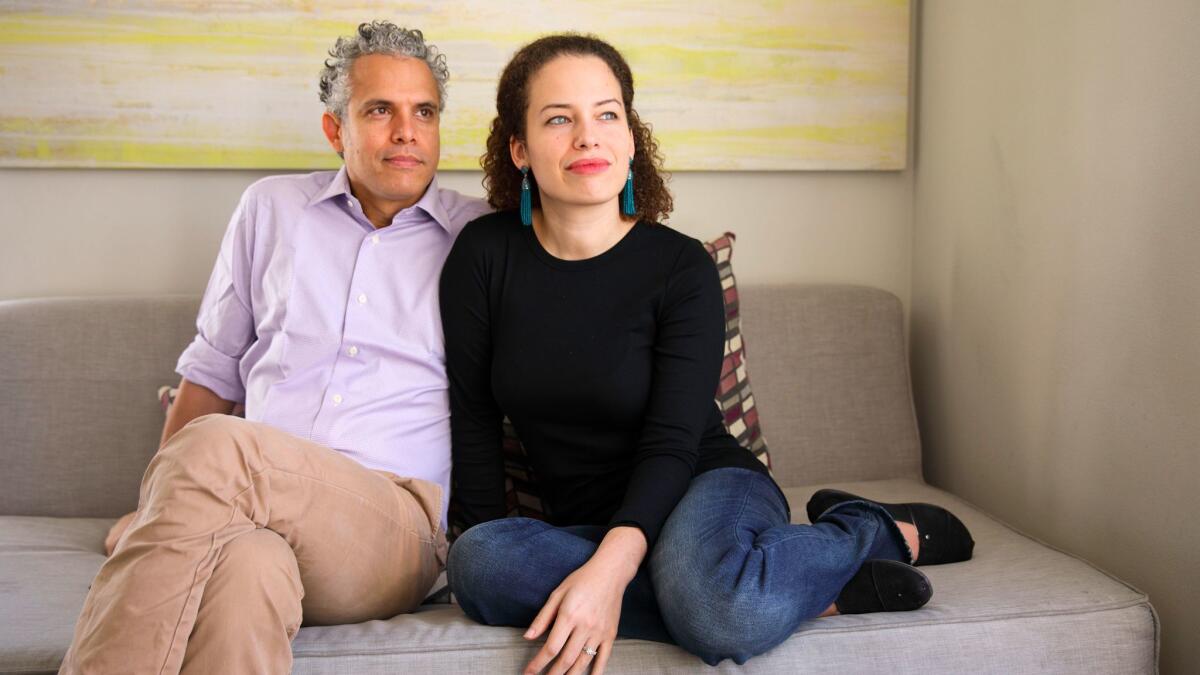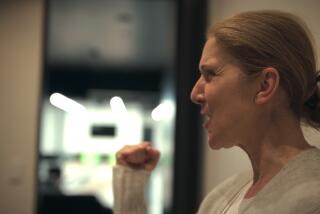Director Jennifer Brea exposes the personal pain of an immune disorder in the documentary âUnrestâ

Jennifer Brea was a PhD candidate at Harvard University when her mind started to fail her. At 28, she was already an accomplished academic, a graduate of Princeton whoâd moved to Massachusetts to delve into the world of political economy and statistics.
But in the midst of her studies, she got sick. At first, she didnât think anything of the illness â it just seemed like a particularly bad case of the flu, one that came along with a 104-degree fever. And yet long after the fever broke, she still felt like her brain was misfiring. Sheâd write one sentence of an email and then pass out for four hours. When sheâd try to work on a paper, all of the words would come out in the wrong order. She felt like sheâd lost her grasp of the English language, substituting the word âhopeâ for something arbitrary, like ârake.â
She went to a number of doctors, but none was able to get to the bottom of her mysterious condition. One told her she had conversion disorder, a psychiatric illness that stems from a hidden trauma and was commonly referred to as âhysteriaâ in the late 19th century.
But Brea knew something more was going on. So the next time she fell to the ground in her home, unable to speak or move her head, she took out her iPhone and filmed herself. At her next doctorâs appointment, when the medical professional suggested she might have an inner ear infection or severe dehydration, she showed him the footage.
âThe expression on his face was like, âOh my God,â â recalled Brea, now 35. âSuddenly he went from âDrink more waterâ to âLetâs go get a spinal tap.â It gave me a sense that my story could only be told visually.â
In 2012 â a year and a half after that high fever â Brea finally got a diagnosis: myalgic encephalomyelitis, or chronic fatigue syndrome. Though the neuroimmune condition affects more than 1 million Americans, it is still largely misunderstood by both the public and the medical community.
Indeed, the illness consists of far more than just a proclivity for napping; patients experience something called post-exertional malaise, which means that if they exert even the smallest amount of energy, they are struck down with debilitating mental and physical fatigue. There is no cure, and only about $6 million in public research funding is devoted toward the condition annually.
Which is why Brea made âUnrest,â a documentary about her battle with ME/CFS that opened in L.A. this weekend and will be shown on PBS in January. While the film serves as a medical explainer, itâs also a love story, following the relationship between Brea and her husband, Omar Wasow. When the couple met, Wasow was also working toward his PhD at Harvard. Eleven years older than Brea, he had already built up an impressive rĂŠsumĂŠ, serving as a technology reporter on NBC and even helping to teach Oprah Winfrey how to use the internet on her talk show.
They were both intellectually curious, and in the first year of their courtship, they traveled around the world exploring foreign countries. By the time they married in 2012 â the ceremony was led by their Harvard professor Henry Louis Gates Jr. â Brea was sick, but neither was aware how serious her condition was. They could still go on bike rides together, but Brea would do six miles instead of the usual 12.
As her illness worsened, Wasow became Breaâs full-time caretaker. At first, he was frustrated: âWhat do you mean you canât get up and help with some mundane thing around the house?â heâd think.
âOne of the most unsettling moments in our marriage was after I had just read this book that said it was all in her head,â said Wasow, 46. âAt a certain point, I just had to trust her. Because even years into this, Iâm like, âWait, this doesnât make sense to me.â Sheâll have a reaction to something in the air and I donât have that reaction, so itâs sort of discordant. But what I believe is that sheâs a credible advocate of whatâs going on in her own body.â
The couple was sitting next to each other in their apartment building in Glendale this winter, just a few weeks after moving cross-country. They had decided to settle in Los Angeles because Breaâs immune system is particularly sensitive to mold, and the dry air in the West makes her feel better. Wasow, meanwhile, is working as a professor in the department of politics at Princeton, so he can only be in California roughly every two weeks.
Wasow and Brea can be more independent now â sheâs on two antiviral medications that have greatly improved her day-to-day function. But as âUnrestâ shows, in the early days of Breaâs illness, she was forced to be incredibly reliant on Wasow.
In one scene, the couple attends a Princeton reunion parade. Though Brea is in a wheelchair, sheâs having a great time cheering on alumni, decked out in her school colors. But as the event marches on, she begins to feel ill, and the two must leave the parade. Back at their home, she is so sick that she cannot walk up the stairs. Wasow tries to carry her, but it is so painful to be touched that she pushes him away, sobbing in the fetal position on their porch.
âI canât be anybodyâs mom like this,â she cries to him later in the movie. âI canât be anybodyâs wife like this. I am nothing. I canât give you anything.â
âYouâre my wife,â Wasow replies through his own tears. âAnd you bring joy into my life every day.â
Filming moments like this, of course, was not easy. Sometimes, Brea would request Wasow film her desperately trying to crawl up the stairs when he just wanted to help her. And before Brea raised $212,000 on Kickstarter â sheâd later secure additional funding for âUnrestâ through the Sundance Institute â she was working such long days interviewing other doctors and patients that Wasow actually worried the film was making her sicker.
âIt was like, if we do this shoot, it helps her feel alive in a moment where itâs hard to find some meaning each day,â he explained. âAnd if we do this shoot, it might actually cost her her life. That was an impossible calculus.â
âI canât tell you how helpless it feels to not be able to move and cry for help,â Brea added. âThose are the moments where you turn on the camera, because on top of everything, if this moment is unseen, this is just stupid, useless pain and it has no meaning. I needed that so badly in that moment that I was willing to take a lot of risks in terms of my own safety, but at the same time, I donât know if I would have survived it had I not been shooting.â
Eventually, Brea figured out a way to actually make the movie from her bed, using her iPad to create her own version of Errol Morrisâ Interrotron that allowed her to interview subjects from afar. With her grant money, she could hire production crews to travel in her stead, often monitoring shots via live stream. Still, she pushed herself when she felt able, traveling to Park City, Utah, to work on the movie with Sundance fellows.
âWe were particularly concerned about her coming up a mountain in Utah because we didnât want to make her work or exacerbate her condition,â said Tabitha Jackson, director of the documentary film program at Sundance. âBut the purity of the air was actually restorative. There was a financing session where she was lying on the floor resting, but that was a sign of her dedication and commitment. She actually didnât need any help, she just needed to be given the ability to be a creative person instead of an ill person.â
Working on âUnrest,â Brea said, has helped her feel like herself again. Thanks to her new drug regimen, her mental capacity has returned, even though she still has days when she physically canât get out of bed. She no longer feels grief for herself, but she does for Wasow and his career, which she feels has been hampered by her ME/CFS.
âClearly, there have been trade-offs,â Wasow acknowledged. âI have peers who graduated about the same time as I did from graduate school who are further along in their careers and have published more work. There are moments where Iâm sort of benchmarking myself against colleagues and feeling like I wish I was more productive, and at the same time Iâm doing work Iâm really proud of. Iâm thrilled by the intellectual work Iâm doing and Iâm also really happy to be on this adventure with you, so weâll make it work. Weâll make it work.â
âYou always think, wouldnât it be so wonderful to lay around and have someone bring you food and not have to do anything? No, itâs terrible,â Brea said. âSuch a big part of being human is being able to give to the person you love and take care of them to support them. Thatâs been hard for me â how am I Omarâs wife if I canât give him these basic things? And one of the things he always says to me is that we both just feel profoundly lucky, because each of us is not right for most people, but we are so right for each other.â
âIâm an odd duck, but Iâm her odd duck,â Wasow said, smiling. âItâs like two broken people together can be whole.â
Follow me on Twitter @AmyKinLA
More to Read
Only good movies
Get the Indie Focus newsletter, Mark Olsen's weekly guide to the world of cinema.
You may occasionally receive promotional content from the Los Angeles Times.











